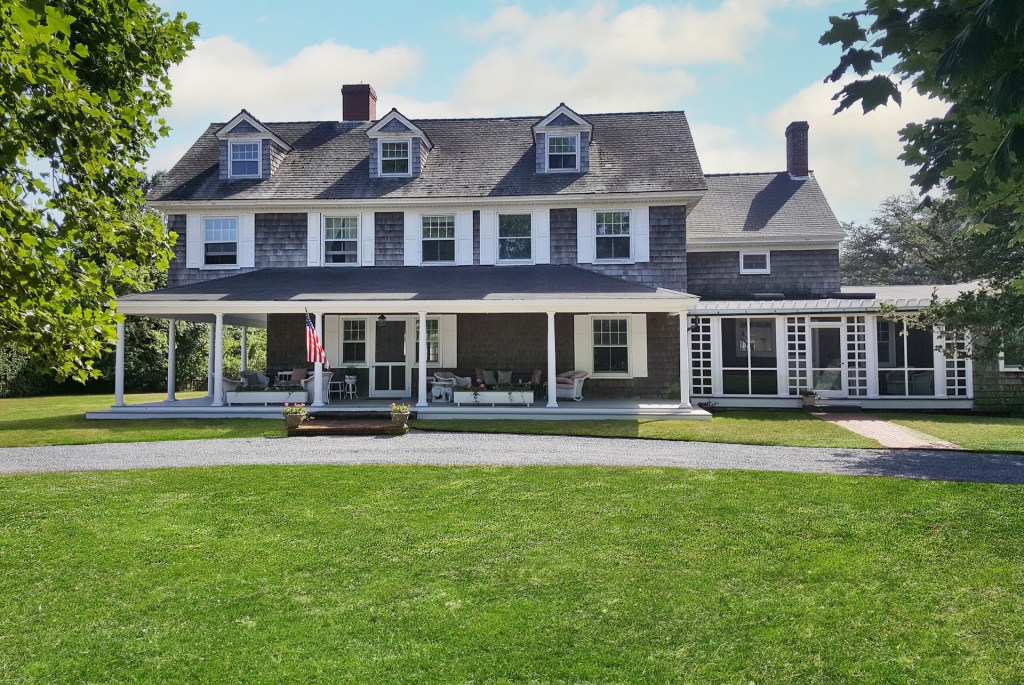When Is Main Street Not Main Street? When It’s Woodlot Lane

The powers that be may be changing the name of Main Street. It is no longer to be called Main Street. It will be called Woodlot Lane, so as not to confuse it with the other Main Streets in East Hampton Town.
I suppose you are fairly confused at this point. Main Street is Main Street, except when it isn’t. We have a Main Street in Southampton, in Westhampton Beach, another in Sag Harbor, another in Bridgehampton, Amagansett, East Hampton, Hampton Bays, Wainscott (where they call it Wainscott Main Street), Riverhead and Montauk.
Then there is a Main Street in what used to be a little village near Northwest Harbor in East Hampton Township. You’d drive up Old Northwest Harbor Road, you’d be there. The village was founded in 1650 and soon had a schoolhouse, a church, a mill, a dock and about 200 residents. But then around 1860, because the big ships coming to the East End were now docking at Long Wharf in Sag Harbor, the little dock and town called Northwest shut down. This was long before roads got paved. Soon the abandoned Main Street was covered with leaves and vines.
Now Main Street may be getting the boot. Main Streets are okay where they are still main streets. In Northwest now, in the woods, we may soon welcome Woodlot Lane.
It’s because of real estate developers. In a few wooded areas of Northwest, they’ve laid out new paved roads. Up in Northwest, a development was put in that now has six houses on what is called Main Street. Whether this is accurately Main Street from the days of old or not is not clear. But whatever it is, the post office and the UPS and Fed Ex people sometimes make a mistake and deliver packages to Main Street in East Hampton that should go to this other Main Street. Creating Woodlot Lane will fix that.
Speaking of this, I want to tell you how the street I live on may soon have its name changed.
The other day, someone bought me a small white keychain disk that has a battery in it. If you lose your keys, you can go to your smartphone, press the app—it’s called Chipolo—and on your phone you press RING and the disk on the keychain chirps and there are your keys, right where you last left them.
Of course, if your keys are too far away to be heard, they have another option. Press MAP and it tells you where they are, as long as the disk is connected to the internet.
I ran a test when I first got it. I set the keys on my desk in the living room, walked into the kitchen and pressed RING and it chirped. I pressed MAP and a dot appeared on my screen and below it, it gave the address of where they could be found.
I live at 28 Three Mile Harbor Hog Creek Road. The app said my keys were at 28 County Road 40. Yet they were right there on my desk. 28 Three Mile Harbor Hog Creek Road is a County Road. Someone is messing with me. Maybe the Russians, maybe Donald Trump, maybe who knows? So yes, I also live at 28 County Road 40.
Anyway, before the automobile, a dirt road went out from Main Street for three miles until it reached the headwaters of Three Mile Harbor. It stopped there. The people of East Hampton fished in Three Mile Harbor. And they called the road to it Three Mile Harbor Road, because the dirt track ran three miles from Main Street. House numbers on Three Mile Harbor Road start at 1 begining where the road leaves town. They got up to 320 at the point where the road reached the harbor.
But my house is on the later continuation of that road, a quarter-mile past the head of the harbor. Around 1920, I believe, the Town got the idea to extend Three Mile Harbor Road another two miles all up along the shore of Three Mile Harbor until it reached the headwaters of this harbor at Gardiner’s Bay. The street numbers did not continue up from 320 to 500, however. The town decided that this new extension should have its own name. Because where it dead-ended at Gardiner’s Bay, it met up with Hog Creek Road, they decided road signs should read “Three Mile Harbor Extension to Hog Creek Road.” Soon, the “to” was removed. Then “Extension” was removed. So today it is “Three Mile Harbor Hog Creek Road.”
I might add that this road from downtown is pretty near straight the whole way. When a furnace repairman asks where I live, I always say “the street numbers start at 1 and go up to 320, then start back at 1 again. My house is at 28, the second time the numbers go up.”
It usually works, except that elsewhere in town there is a Three Mile Harbor Drive. Another problem. Or, a service man will use a GPS and God knows where he will wind up.
Well, sitting at my desk, I entered 28 County Road 40 on my cell phone, and there it was, right where I was sitting. Curious, I entered 1 County Road 40, and the dot was three miles away where the street begins its journey from town out to the harbor. That’s crazy. I tried 2 County Road and that brings you to where the numbers go up for the second time. So between 1 and 2, there is a gap of three miles. Another botch. I do hope this does not stick.
The now-vanished Village of Northwest is famous for two citizens. The first was a kindly Dutchman named Isaac Von Scoy, who moved to Northwest as a young man in 1760. He built a house and started farming. When he was 20 years old, he married a local girl, Mercy Edwards. They had two children. When the revolution started, Long Island fell to the British, and the Redcoats made everybody sign an oath of loyalty to the King. Von Scoy refused. One night two British Redcoats came to visit Von Scoy at his farm. He killed one of them with a pitchfork. The other ran away. Von Scoy was soon arrested and taken out to a British frigate to await trial. But one night, locals rowed out and rescued Von Scoy, and he went into hiding for the rest of the war. He’s considered a hero.
Then there was the villain Josiah Kirk. He bought 400 acres of Northwest in 1860, fenced it off and refused to let locals onto his property or onto the arc of the beach where his home fronted. Locals had been gathering seaweed from along the shore there for house bedding and wall insulation, but Kirk put a stop to it by suing everybody and putting up Keep Out signs. In 1880, though, he went bankrupt, got sent to a debtor’s prison in Yaphank and died there.
In 1890, with the unpleasant memory of Kirk still in everyone’s minds, the last local farmer left Northwest Harbor, making it a ghost town. All it is now is a memory, along with the school foundation, a monument, Scoy’s Pond, and the foundations of Von Scoy’s and Kirk’s houses. And now, Woodlot Lane.



